Introduction
- Martha Elizabeth Rogers’ theory helps nurses deliver quality healthcare to their patients.
- Rogers’ theory that gave nursing a new meaning.
- The theory views human beings as unitary systems in the environment.
- This presentation explains why Roger’s nursing theory can be used to assess patients’ health patterns and behavior.
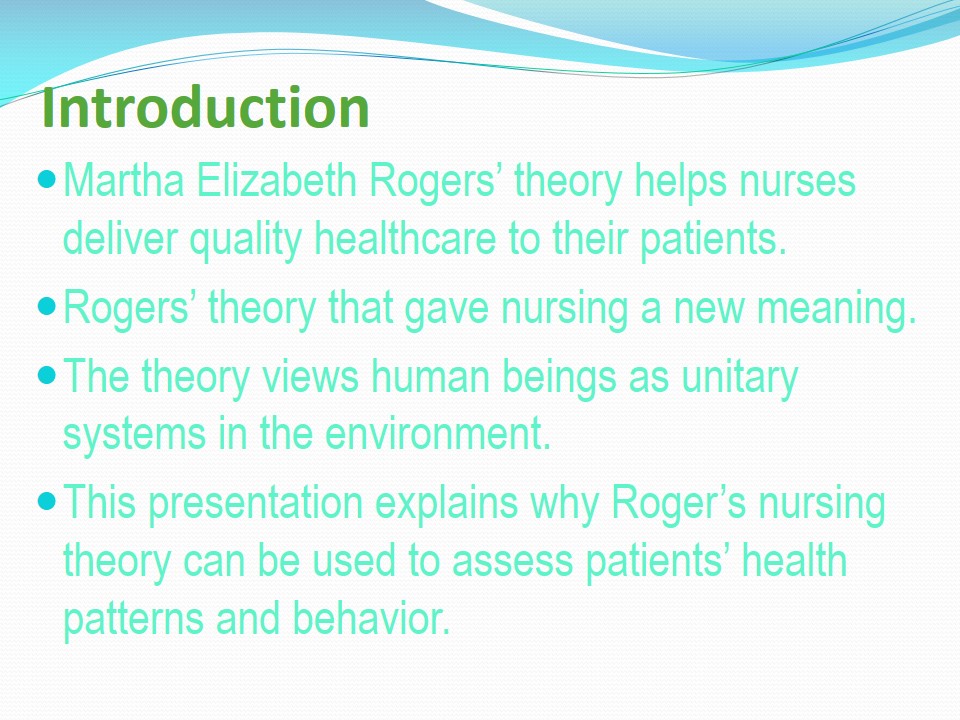
Overview of the Theory
- Martha Rogers’ theory is the “Unitary Human Beings Theory” (Fawcett, 2003).
- The theory views human life as a continuous process.
- The process changes depending on the person’s experiences and interaction with the environment.
- Nurses should use evidence-based approaches to examine and analyze their patients’ health.
- The nursing philosophy indicates why a person’s health is the manifestation of the human-environment relationship (McEwen & Willis, 2010).
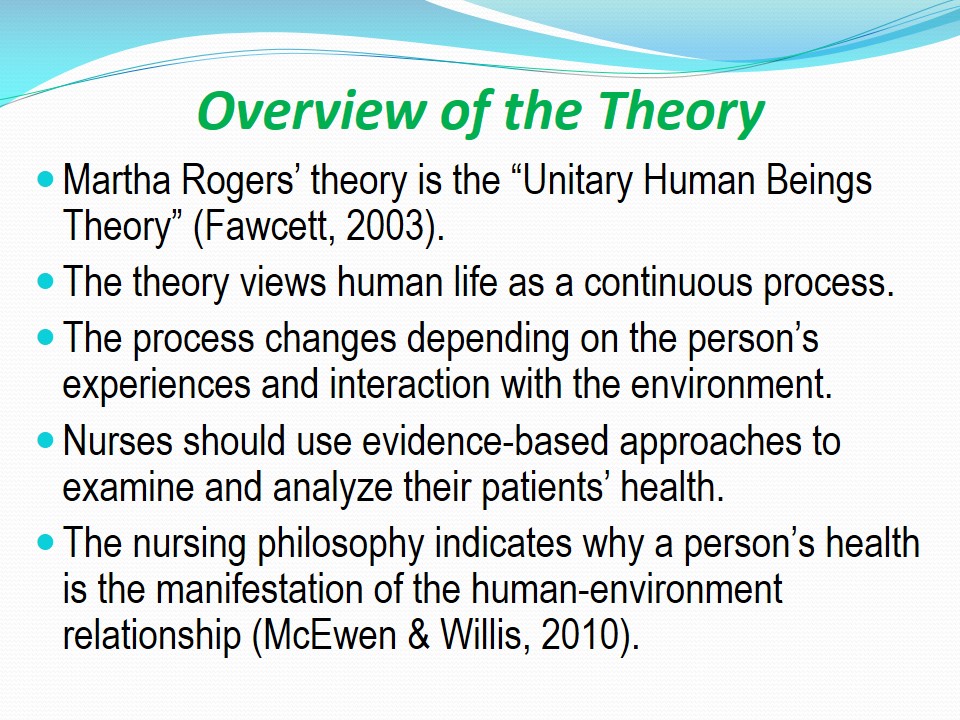
Applying the Theory to Understand the Assessment of Patients’ Patterns of Health Behavior
- The theory identifies human beings as unified object that cannot be understood by summarizing their parts.
- Human beings and environment have four dimensional integrated energy fields (Tomey & Alligood, 2006).
- The theory helps nurses understand the assessment of patients’ health patterns and behavior.
- The caregiver should examines both the human and environment fields in order to understand the causes of a specific condition or disease (Fawcett, 2003).
- The theorist also explains why patients can achieve their health goals even when suffering from a terminal disease.
- Nurses should use the theory to establish and re-pattern the existing energy fields. This will help nurses examine and adjust the human-environment relationship.
- Nurses should use evidence-based practices to deal with the issues affecting their patients.
- The idea of science and art fosters awareness and creativity thus assessing the patient’s health patterns and behaviors (McEwen & Willis, 2010).

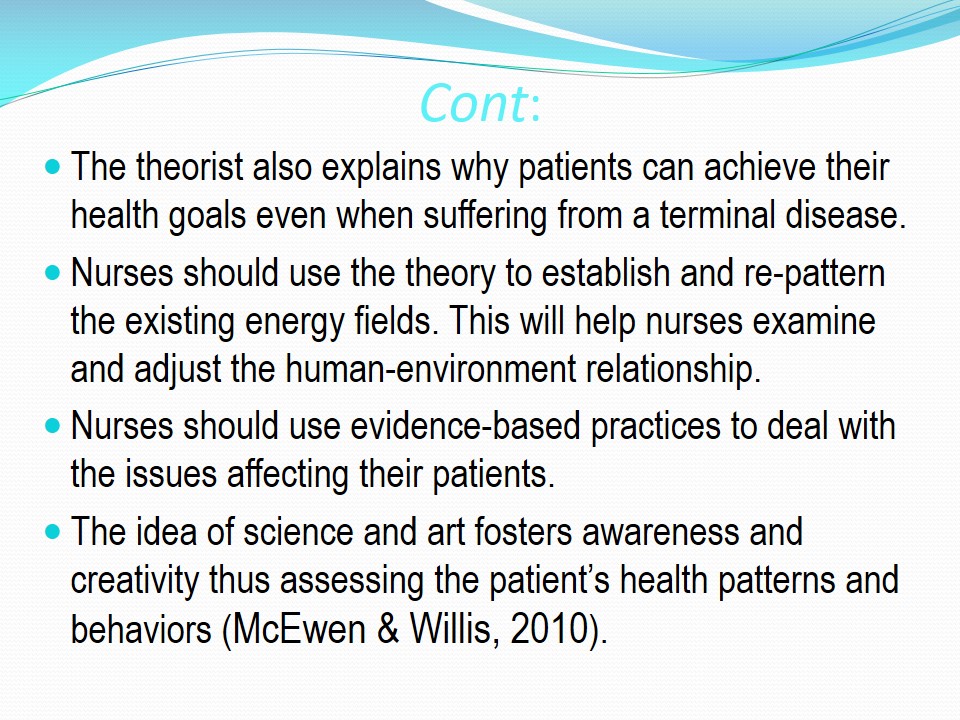
Applying the Theory to Help the Patient
The “Rogerian Ethics” presented below encourages nurses and caregivers to promote testability. This helps nurses develop the best relationship with their patients.
- The idea helps nurses to focus on scientific inquiry in order to understand the environment dynamics that affect disease human development and healing.
- This will be a creative and artist approach to understand the health patterns of different patients and provide them with best support and care.
- The theory will promote consciousness among the nurses and patients. This will help improve the patient’s health situation (Nortvedt, 2000).
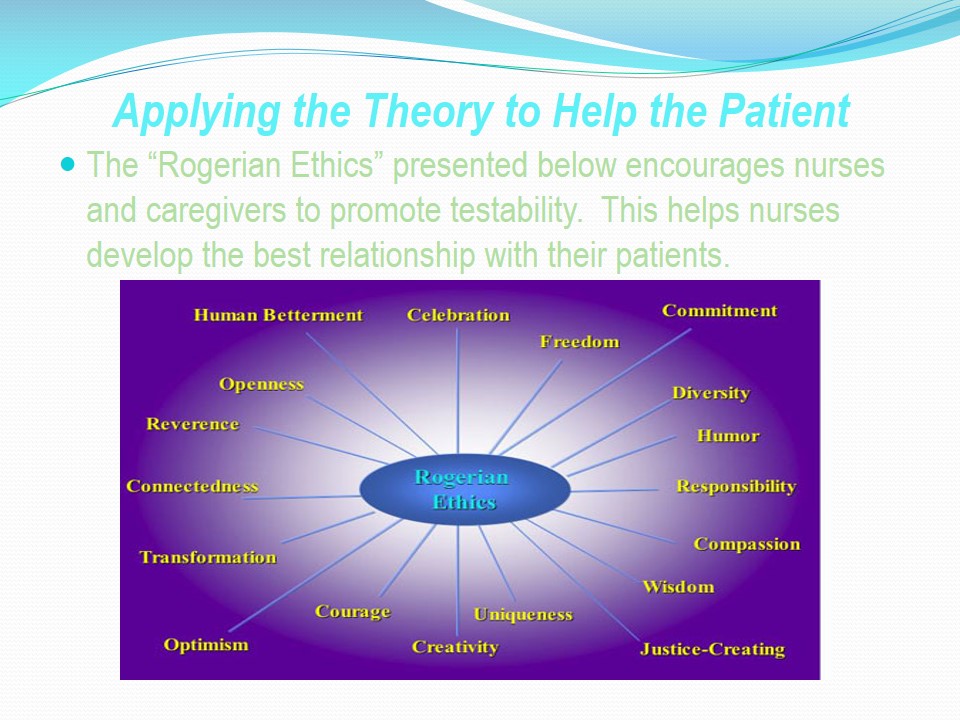
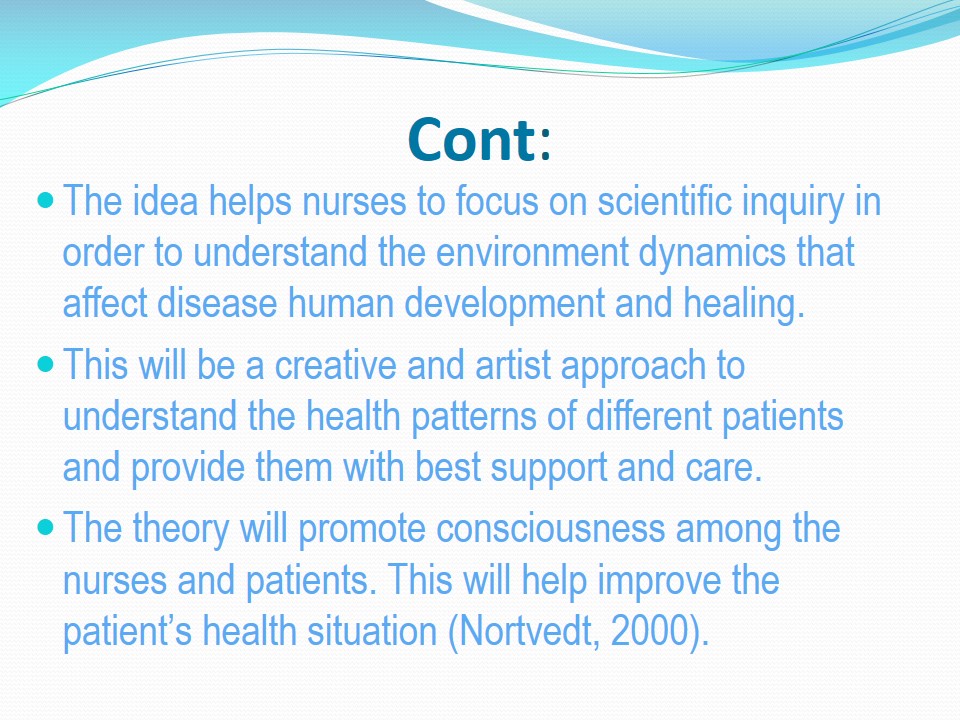
Conclusion
- Nursing can be successful even if it does not treat a disease (Fawcett, 2003).
- Martha’s theory encourages nurses to improve the wellness and living conditions of their patients.
- Life can be meaningful even when suffering from a specific disease (Watson & Smith, 2002).
- The caregiver will use different scientific models to readjust the human-environment relationship. This explains why the theory is a powerful nursing tool.
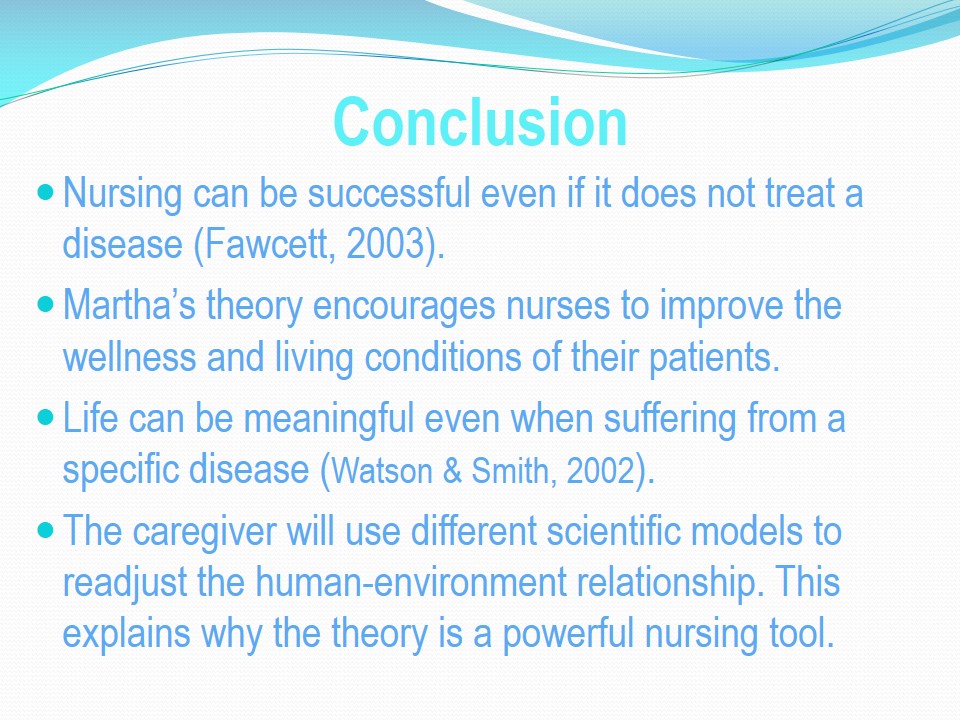
Reference List
Fawcett, J. (2003). The Nurse Theorists: 21st Century Updates: Martha E. Rogers. Nursing Science Quarterly, 16(1), 44-51.
McEwen, M., & Willis, E. (2010). Theoretical Basis for Nursing. Philadelphia: Lippincott Williams & Wilkins.
Nortvedt, P. (2000) Clinical sensitivity: the inseparability of ethical perceptiveness and clinical knowledge. Scholarly Inquiry for Nursing Practice, 14(1), 1-19.
Tomey, A., & Alligood, M. (2006). Nursing Theorists and Their Work. St. Louis, MO: Mosby.
Watson, J., & Smith, M. (2002). Caring science and the science of unitary human beings: a trans-theoretical discourse for nursing knowledge development. Journal of Advanced Nursing, 37(5), 452-461.